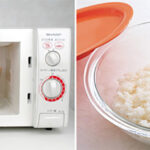A recent post on a handy kitchen appliance group sparked an interesting discussion about a familiar kitchen item. The topic? Plastic wrap and its use in the microwave.
Both plastic wrap and microwaves are essential tools for food preservation. Microwaves are great for reheating meals, keeping them warm and tasty. Plastic wrap, on the other hand, helps keep food fresh by acting as a cover, protecting it from external bacteria and odors when stored in the fridge.
The author of the post shared their perspective, strongly advising against using plastic wrap in the microwave. They supported their argument with points outlining the potential health hazards associated with heating plastic-wrapped food.
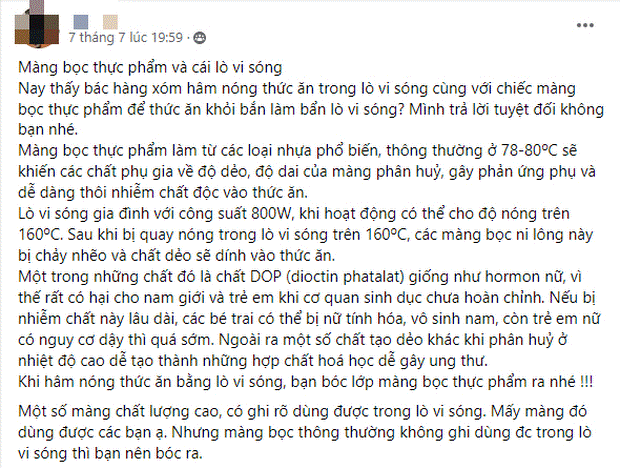
The original post sparked a debate about the use of plastic wrap in microwaves, with clear arguments presented. (Image: Group Hội dùng máy rửa bát và đồ gia dụng tiện ích)
The comments section saw a divided opinion, with some agreeing with the author and others suggesting that as long as one pays attention to details like the type of plastic wrap, heating temperature, and ensuring the wrap doesn’t touch the food directly, it should be fine.
So, what’s the verdict? Should we avoid microwaving food with plastic wrap? Or are there specific precautions to follow?
Understanding Plastic Wraps
Plastic wraps are typically made from virgin plastics, mainly PE (Polyethylene) and PVC (Polyvinyl Chloride). The specific type of plastic used will determine the characteristics of the wrap.
PE plastic wraps are made from tiny white plastic beads, resulting in a naturally white and transparent wrap. This type of wrap is highly flexible but easily flammable, burning quickly and challenging to extinguish.
When touched, PE plastic wraps don’t leave a sticky residue and can be easily separated when in direct contact with each other.
On the other hand, PVC plastic wraps are also made from plastic beads but have a whitish or light yellow color. They are less flexible than PE wraps and are more difficult to burn, only igniting when exposed to direct flame and emitting a pungent odor.
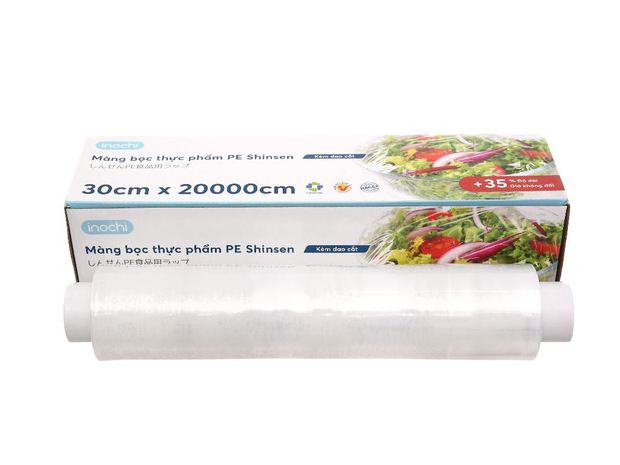
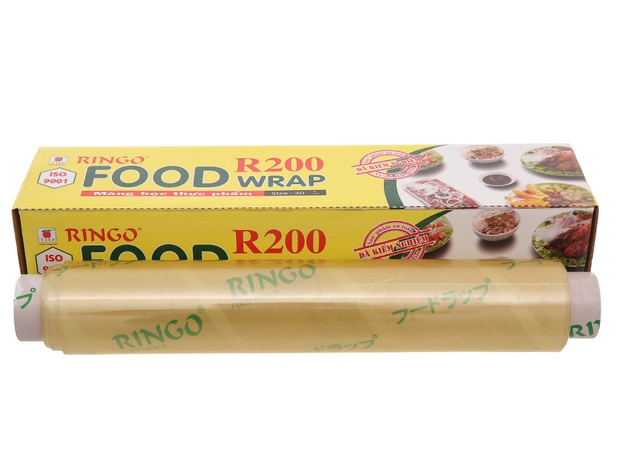
PE plastic wrap (top) is naturally white and transparent, while PVC plastic wrap (bottom) is whitish or light yellow, requiring the addition of plasticizers for improved flexibility. (Illustrative images)
Due to its lower flexibility, PVC plastic wraps often contain plasticizers like DEHP (Di 2-Ethylexyl phthalate) to enhance their suppleness. This type of wrap can feel sticky to the touch and is challenging to separate when the layers come into direct contact.
Is It Safe to Microwave Food with Plastic Wrap?
While it’s convenient to cover food with plastic wrap before microwaving to prevent oil splatters, experts advise against making it a habit.
According to GS.TS Nguyen Van Khoi, from the Polymer Materials Room of the Institute of Chemistry, Vietnam Academy of Science and Technology, regularly heating food with plastic wrap in the microwave is a mistake. The reason lies in the materials used to make these wraps—primarily plastic—and, in the case of PVC, the addition of plasticizers.
When exposed to high temperatures, these materials can melt and leech into your food, potentially harming your health and reducing the quality of your meal if it comes into direct contact with the wrap.
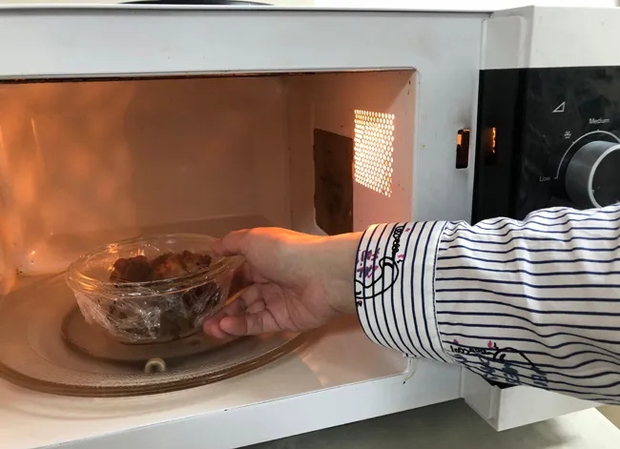
It’s not recommended to regularly heat food with plastic wrap in the microwave. (Illustrative image)
As an alternative to PVC plastic wrap, you can opt for safer options like high-quality PE plastic wraps that are additive-free or choose modern alternatives like PVDC (Polyvinylidene Chloride) and PMP (Polyvinylidene Chloride) wraps. However, these should only be used for short periods and at low temperatures, typically below 150°C.
While these wraps may be marked as microwave-safe, they tend to be more expensive than regular wraps.
Be sure to read the instructions and ingredient list on the packaging to make an informed choice.
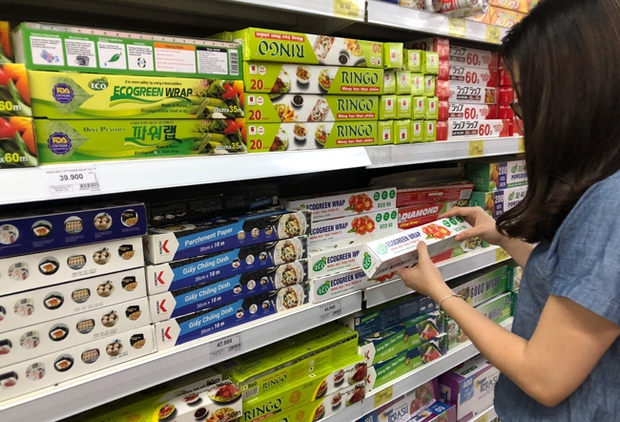
Always refer to the instructions and ingredient list on the packaging to choose the right plastic wrap for your needs. (Illustrative image)
If you want to minimize the use of plastic wrap when reheating food in the microwave, consider using alternative options like glass or ceramic plates or specialized lids.
Source: Trí Thức Trẻ
The Grateful Child: Are You Raising One?
“In the spiritual realm, it is believed that the bond between parents and children transcends lifetimes. This karmic connection is often seen as a way for souls to repay debts from past lives or to express gratitude. It is a profound and intricate web of relationships that shapes our present and future.”





























